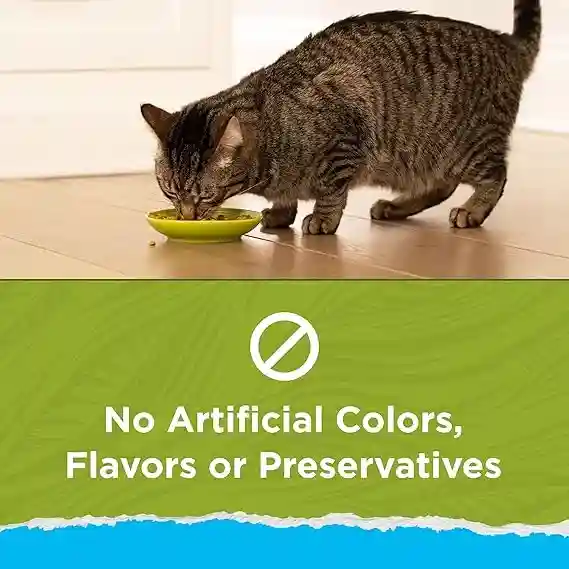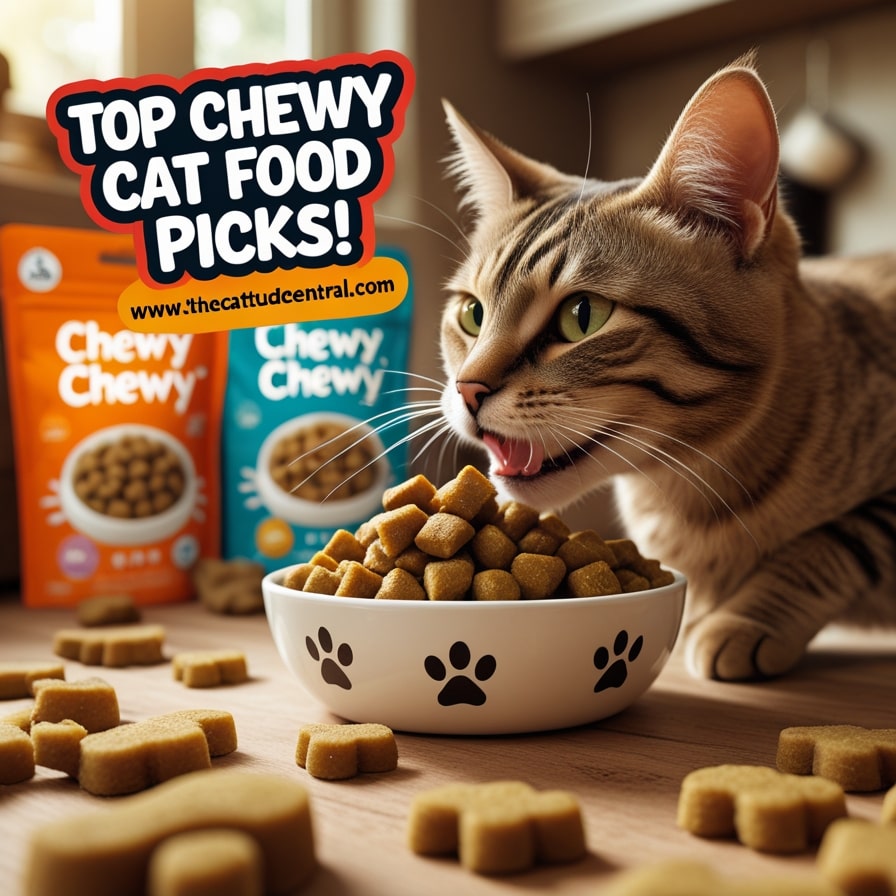Cats are more than just pets—they’re family. As a cat owner, you want your feline friend to live a long, healthy, and vibrant life. The foundation of that life? Proper nutrition. Feeding your cat the right food in the right amounts can prevent health issues, boost energy, and even improve their mood. But with so many cat food options on the market—dry kibble, wet food, raw diets, and homemade meals—how do you know what’s best?
This cat nutrition guide is your one-stop resource for understanding feline dietary needs. Whether you’re a new cat parent or a seasoned owner, this guide will walk you through the essentials of cat nutrition, common mistakes to avoid, and expert tips to ensure your cat thrives. Let’s dive in!
Understanding Your Cat’s Nutritional Needs
Cats are obligate carnivores, meaning their bodies are designed to thrive on a meat-based diet. Unlike dogs or humans, cats require specific nutrients that are primarily found in animal tissues. Here’s a breakdown of the key nutrients your cat needs:
- Protein: The cornerstone of a cat’s diet. Proteins provide essential amino acids like taurine, which supports heart health, vision, and reproduction. Without adequate protein, cats can develop serious health issues.
- Fats: Fats are a concentrated source of energy and provide essential fatty acids like omega-3 and omega-6, which support skin, coat, and immune health.
- Carbohydrates: While not essential, small amounts of carbs (from grains or vegetables) can provide energy. However, cats have limited ability to digest large amounts of carbs.
- Vitamins and Minerals: Cats need vitamins like A, D, and B-complex, as well as minerals like calcium, phosphorus, and magnesium, for bone health, nerve function, and more.
- Water: Hydration is critical, especially for cats prone to urinary tract issues. Wet food or water fountains can encourage drinking.
A balanced diet tailored to your cat’s life stage (kitten, adult, senior) and health needs is crucial. Always consult your veterinarian to customize your cat’s diet.
Types of Cat Food—Which Is Best?
When it comes to feeding your cat, you’ll encounter several options. Each has its pros and cons, so let’s explore them in this cat nutrition guide.
1. Dry Kibble
- Pros: Affordable, convenient, and has a long shelf life. Helps maintain dental health by reducing tartar buildup.
- Cons: Often high in carbohydrates and low in moisture, which can contribute to dehydration or urinary issues.
- Best For: Cats with healthy hydration habits and no underlying health conditions.
- Pros: High moisture content supports hydration and urinary health. Typically higher in protein and lower in carbs than kibble.
- Cons: More expensive and less convenient due to refrigeration needs.
- Best For: Cats with urinary tract issues, picky eaters, or those needing more hydration.
- Pros: Mimics a cat’s natural diet, offering high protein and minimal fillers. Allows control over ingredients.
- Cons: Risk of bacterial contamination (e.g., salmonella) and nutritional imbalances if not properly formulated. Time-consuming and expensive.
- Best For: Owners willing to work with a veterinary nutritionist to ensure balance.
- Pros: Formulated for specific health conditions like kidney disease, diabetes, or food allergies.
- Cons: Expensive and requires veterinary guidance.
- Best For: Cats with diagnosed medical conditions.
Look for cat food labeled “complete and balanced” by the Association of American Feed Control Officials (AAFCO). This ensures the food meets minimum nutritional standards.
Decoding Cat Food Labels
Reading cat food labels can feel like deciphering a foreign language. To make informed choices, here’s what to look for in this cat nutrition guide:
- Ingredient List: Ingredients are listed by weight, so the first few should be high-quality proteins (e.g., chicken, turkey, fish). Avoid vague terms like “meat by-products” or excessive fillers like corn or wheat.
- Guaranteed Analysis: Shows the minimum percentages of protein and fat and maximum percentages of fiber and moisture. Compare these to your cat’s needs.
- AAFCO Statement: Confirms the food is complete and balanced for a specific life stage (e.g., kitten, adult, all life stages).
- Feeding Guidelines: Provides portion recommendations, but adjust based on your cat’s weight, activity level, and health.
Avoid foods with artificial colors, flavors, or preservatives like BHA/BHT, which may be harmful over time.
Feeding Tips for Different Life Stages
Cats’ nutritional needs change as they age. Here’s how to adjust their diet:
Kittens (0-12 Months)
- Needs: High protein, fat, and calories to support rapid growth and development.
- Feeding Frequency: 3-4 small meals daily.
- Best Food: Kitten-specific formulas (wet or dry) with higher calorie content.
Adult Cats (1-7 Years)
- Needs: Balanced diet to maintain weight, energy, and overall health.
- Feeding Frequency: 2 meals daily, with portion control to prevent obesity.
- Best Food: High-protein, moderate-fat adult formulas tailored to activity level.
Senior Cats (7+ Years)
- Needs: Lower calories to prevent weight gain, but high-quality protein to maintain muscle mass. Added joint support (e.g., glucosamine) is a bonus.
- Feeding Frequency: 2-3 smaller meals to aid digestion.
- Best Food: Senior-specific or prescription diets for age-related conditions like arthritis or kidney disease.
Did you know that spayed/neutered cats may need 20-25% fewer calories than intact cats due to a slower metabolism?
Common Cat Nutrition Mistakes to Avoid
Even well-meaning cat owners can make mistakes. Here are some pitfalls to steer clear of:
- Overfeeding: Obesity affects over 50% of cats, leading to diabetes, arthritis, and heart disease. Stick to portion guidelines and monitor your cat’s body condition.
- Feeding Human Food: Foods like chocolate, onions, garlic, and grapes are toxic to cats. Even non-toxic foods like dairy can cause digestive upset.
- Ignoring Hydration: Cats are prone to urinary tract issues, so ensure they drink enough water. Wet food or a pet water fountain can help.
- Sudden Diet Changes: Transition to new foods gradually over 7-10 days to avoid stomach upset or refusal to eat.
- Assuming All Cats Are the Same: Each cat is unique. Factors like breed, health, and lifestyle influence their dietary needs.
Use a measuring cup for precise portions and weigh your cat monthly to catch weight changes early.
Special Diets for Health Conditions
Some cats require specialized diets to manage health issues. Here’s a quick overview:
- Urinary Health: Diets high in moisture and low in magnesium (e.g., Hill’s c/d or Royal Canin Urinary SO) help prevent crystals and stones.
- Kidney Disease: Low-protein, low-phosphorus diets (e.g., Royal Canin Renal Support) reduce strain on the kidneys.
- Food Allergies: Limited-ingredient or hydrolyzed protein diets (e.g., Blue Buffalo Natural Veterinary Diet) minimize allergic reactions.
- Diabetes: High-protein, low-carb diets (e.g., Purina Pro Plan DM) help regulate blood sugar.
Always consult your veterinarian before starting a special diet.
Treats, Supplements, and Extras
Treats and supplements can enhance your cat’s diet, but moderation is key.
- Treats: Limit treats to 10% of daily calories. Choose healthy options like freeze-dried meat or dental treats.
- Supplements: Omega-3 fatty acids, probiotics, or joint supplements may benefit some cats, but only use under veterinary guidance.
- Cat Grass: Provides fiber and aids digestion. Many cats love nibbling on it!
Avoid over-supplementing, as excess vitamins or minerals can be toxic.
Budget-Friendly Cat Nutrition Tips
Feeding your cat well doesn’t have to break the bank. Try these tips:
- Buy in Bulk: Purchase larger bags of kibble or cases of wet food for savings.
- Mix Wet and Dry: Combine high-quality kibble with wet food to balance cost and hydration.
- Look for Sales: Subscribe to pet store newsletters for discounts or coupons.
- Avoid Cheap Fillers: Low-cost foods with fillers may lead to health issues, costing more in vet bills.
Transitioning to a New Diet
Switching your cat’s food? Follow these steps for a smooth transition:
- Days 1-3: Mix 25% new food with 75% old food.
- Days 4-6: Mix 50% new food with 50% old food.
- Days 7-9: Mix 75% new food with 25% old food.
- Day 10: Feed 100% new food.
Monitor for signs of digestive upset (e.g., vomiting, diarrhea) and slow the transition if needed.
FAQs About Cat Nutrition
Q: How much should I feed my cat?
A: It depends on their weight, age, and activity level. Check the food label and consult your vet for personalized advice.
Q: Can cats be vegetarian or vegan?
A: No. Cats are obligate carnivores and require meat-based nutrients like taurine, which plant-based diets lack.
Q: Why does my cat refuse to eat?
A: Stress, illness, or food boredom could be the cause. Consult your vet if refusal lasts more than 24 hours.
Q: Is grain-free food better for cats?
A: Not necessarily. Grains are fine in moderation unless your cat has a specific allergy.
Conclusion
Proper nutrition is the key to a happy, healthy cat. By understanding your cat’s unique needs, choosing high-quality food, and avoiding common mistakes, you can set your feline up for a long and vibrant life. This cat nutrition guide has equipped you with the knowledge to make informed decisions—now it’s time to put it into action!
Start by evaluating your cat’s current diet, consulting your veterinarian, and making small changes to improve their nutrition. Your cat will thank you with purrs, playfulness, and endless love.
Have questions about your cat’s diet? Share them in the comments below or contact your veterinarian for personalized advice. Don’t forget to subscribe to our YouTube Channel for more cat care tips!



